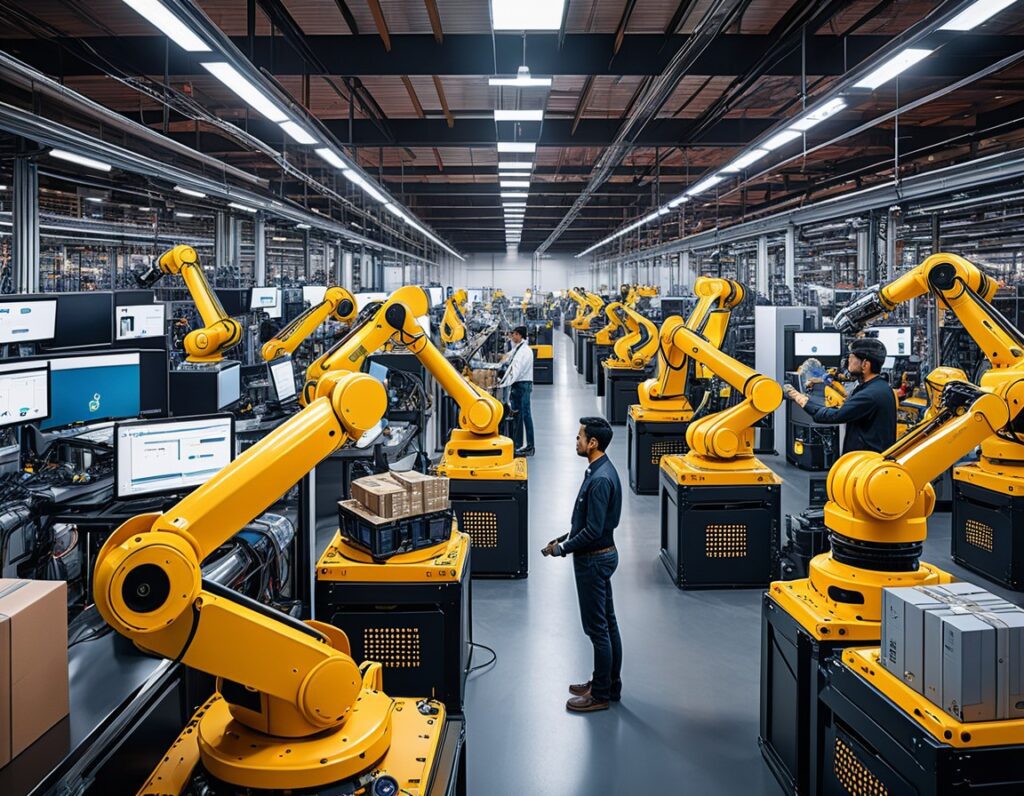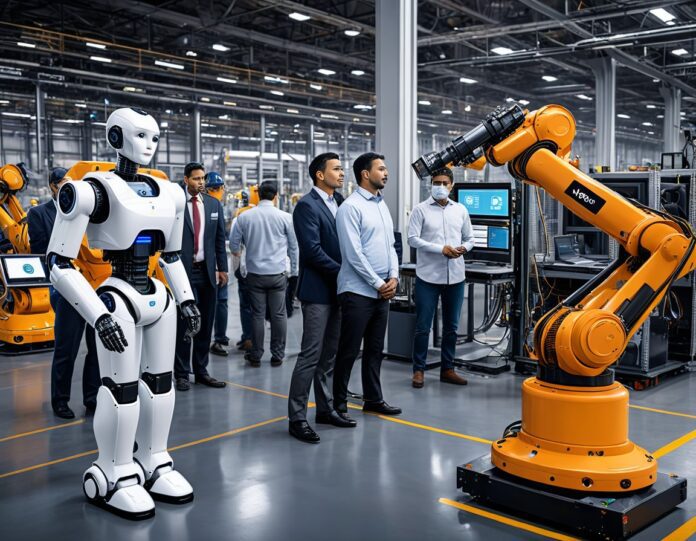As artificial intelligence (AI) continues its rapid advancement, the job markets in the United States and Mexico are bracing for a seismic shift. By the end of 2025, it’s projected that AI Impact on Jobs in US and Mexico will significantly affect over 60 million jobs across these two North American nations. This technological revolution, driven by automation and machine learning, is set to reshape the workforce landscape in unprecedented ways.
The AI Revolution in the US and Mexican Job Markets
United States: A Quarter of Jobs at Risk
In the United States, a staggering 26% of jobs across various industries face potential AI displacement. This translates to approximately 36 million workers who may need to adapt, reskill, or transition to new roles in the face of AI integration.
Mexico: Manufacturing and Service Sectors in the Crosshairs
Mexico, with its strong manufacturing base and growing service industry, is not immune to the AI Impact on Jobs in US and Mexico wave. The impact will be particularly pronounced in sectors where repetitive tasks are prevalent, potentially affecting up to 24 million jobs.
Industries Most Vulnerable to AI Disruption
- Manufacturing: Robotics and automated systems are revolutionizing production lines.
- Transportation: Self-driving vehicles and AI-powered logistics are transforming this sector.
- Customer Service: Chatbots and virtual assistants are handling an increasing number of customer interactions.
- Retail: AI-powered inventory management and automated checkouts are becoming more common.
- Financial Services: Algorithmic trading and automated fraud detection are reshaping finance.
The Human Cost: Who’s Most at Risk?
- Low-skilled Workers: Those in repetitive, routine jobs are most vulnerable to AI replacement.
- Women in the Workforce: Many jobs traditionally held by women, such as administrative roles, are at high risk of automation.
- Lower-income Employees: These workers often lack the resources for retraining, making them more susceptible to job displacement.
The Silver Lining: New Opportunities in the AI Era
While the threat of job displacement is real, the AI revolution also promises new opportunities:
- High-skilled Tech Jobs: Demand for AI specialists, data scientists, and machine learning engineers is skyrocketing.
- AI-complementary Roles: Jobs that require emotional intelligence, creativity, and complex problem-solving will become more valuable.
- Productivity Boost: AI integration can lead to increased efficiency, potentially creating new jobs in growing industries.
Workforce Transformation: The Key to Surviving the AI Revolution
Education and Reskilling: The New Imperative
To navigate this shifting landscape, a massive reskilling effort is crucial. Both countries need to focus on:
- Developing AI literacy programs
- Promoting STEM education at all levels
- Creating accessible adult learning and retraining programs
Skills for the AI Age
Workers should focus on developing skills that AI cannot easily replicate:
- Emotional Intelligence
- Critical Thinking
- Creativity and Innovation
- Complex Problem-Solving
- Adaptability and Continuous Learning
Government and Industry Response
United States: Balancing Innovation and Worker Protection
The U.S. government is exploring policies to:
- Invest in AI research and development
- Strengthen social safety nets for displaced workers
- Encourage private-public partnerships for workforce development
Mexico: Bridging the Digital Divide
Mexico’s strategy includes:
- Investing in digital infrastructure, especially in rural areas
- Promoting tech education and entrepreneurship
- Attracting AI-focused foreign investment to create high-skilled jobs
The Role of Businesses in the AI Transition
Companies in both countries are adapting to the AI revolution by:
- Implementing AI ethics guidelines
- Offering in-house training and reskilling programs
- Redesigning jobs to complement AI capabilities
- Investing in human-AI collaboration technologies
Economic Impact: The Double-Edged Sword of AI
Potential Benefits
- Increased productivity and economic growth
- New industries and job categories
- Enhanced global competitiveness
Potential Risks
- Widening income inequality
- Short-term job market disruptions
- Skill mismatches in the labor force
Case Studies: AI Success Stories
- Amazon’s AI-Powered Warehouses: Increased efficiency while creating new roles for human workers.
- IBM Watson in Healthcare: Enhancing diagnoses while creating jobs for AI healthcare specialists.
- Mexican Startups Leveraging AI: Companies like Kueski using AI for financial inclusion, creating new fintech jobs.
Preparing for the AI Future: Action Steps

For Workers:
- Embrace lifelong learning
- Develop a diverse skill set
- Stay informed about AI trends in your industry
For Employers:
- Invest in employee reskilling programs
- Foster a culture of innovation and adaptability
- Implement ethical AI practices
For Policymakers:
- Develop comprehensive AI strategies
- Invest in education and digital infrastructure
- Create policies to ensure equitable AI integration
Frequently Asked Questions (FAQs)
How will AI impact the US and Mexican job markets by 2025?
AI Impact on Jobs in US and Mexico is projected to affect over 60 million jobs by 2025, potentially displacing many low-skilled, repetitive jobs while creating demand for high-skilled roles in AI development, data analysis, and cybersecurity.
Which industries are most vulnerable to AI job disruption?
Manufacturing, transportation, customer service, retail, and financial services are among the most vulnerable sectors, as many jobs in these industries involve repetitive, automatable tasks.
Will AI create new jobs as well as eliminate them?
Yes, AI is expected to create new jobs, particularly in high-skill industries like technology, healthcare, and finance. Workers with skills in data analysis, AI development, and AI-human interaction are likely to benefit the most.
What skills should workers develop to prepare for an AI-driven job market?
Workers should focus on developing skills that complement AI, such as emotional intelligence, creativity, critical thinking, and complex problem-solving. Continuous learning and adaptability will be crucial.
How can governments in the US and Mexico mitigate the negative effects of AI on jobs?
Governments can invest in education and reskilling programs, establish robust social safety nets for displaced workers, develop digital infrastructure, and create policies to ensure equitable AI integration across industries.
As we approach 2025, the AI revolution in the US and Mexican job markets presents both challenges and opportunities. By proactively addressing the impending changes, investing in human capital, and fostering innovation, both nations can harness the power of AI to create more productive, inclusive, and resilient economies. The key lies in embracing change, prioritizing continuous learning, and ensuring that the benefits of AI are shared across all sectors of society.


